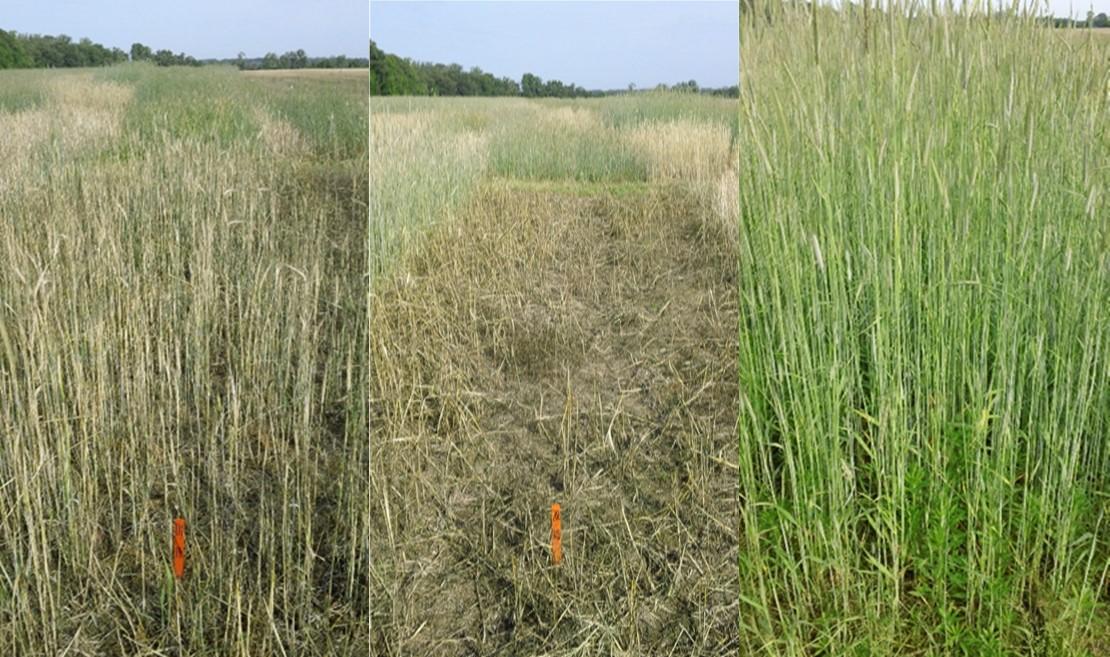Assessing Herbicide Options for Preplant Weed Control in Soybean
Starting clean, or weed-free, is a critical component of any weed management program. In 2022, growers experienced either a lack of or higher cost of glyphosate-based herbicides that are typically used to control weeds prior to planting soybean. In a study sponsored by the Maryland Soybean board and conducted at the University of Maryland’s Central Maryland and Wye Research and Education Centers, different glyphosate-based and non-glyphosate based herbicide treatments were evaluated for their ability to provide effective preplant weed control (Table 1). These treatments included both single and sequential herbicide applications.
| Treatmentᵃ | Application A | Group | Rate (fl oz a⁻¹) | Application Bb | Group | Rate (fl oz a⁻¹) |
|---|---|---|---|---|---|---|
| 1 | Select Max | 1 | 16 | Enlist One | 4 | 32 |
| 2 | Select Max | 1 | 16 | Xtendimax | 4 | 22 |
| 3 | Enlist One | 4 | 32 | Select Max | 1 | 16 |
| 4 | XtendiMaxᶜ | 4 | 22 | Select Max | 1 | 16 |
| 5 | Sharpen + Select Max | 14+1 | 2 | ---- | ||
| 6 | Sharpen | 14 | 2 | Select Max | 1 | 16 |
| 7 | Select Max | 1 | 16 | Sharpen | 14 | 2 |
| 8 | Roundup + Enlist One | 9+4 | 22+32 | ---- | ---- | |
| 9 | Roundup + XtendiMax | 9+4 | 22+22 | ---- | ---- | |
| 10 | Roundup + Liberty | 9+10 | 22+43 | ---- | ---- | |
| 11 | Roundup + Gramoxone | 9+22 | 22+64 | ---- | ---- | |
| 12 | Roundup | 9 | 22 | ---- | ---- | |
| 13 | Liberty | 10 | 43 | ---- | ---- | |
| 14 | Gramoxone | 22 | 64 | ---- | ---- |
ᵃ Required adjuvants were included with each treatment according to the product label.
ᵇ Application B indicates a sequential herbicide application made 1 week after the initial application A.
ᶜ Treatments containing XtendiMax were only applied at the Wye REC location.
Our results showed that non-glyphosate-based herbicides can provide excellent weed control. A single application of Liberty or Gramoxone alone provided greater than 92% control of both grasses and broadleaf weeds at both sites (Figs. 1-3). In addition, there was no significant improvement in efficacy with combinations of Roundup + Liberty or Roundup + Gramoxone.
Results varied when herbicide applications were split. Weed control was better at the Wye REC compared to the CMREC. At CMREC, sequential applications containing Select and Sharpen controlled broadleaves better than sequential applications containing Select and Enlist. A similar result occurred at the Wye REC, however, sequential applications containing Select and Sharpen only provided significantly greater broadleaf control when compared to Select followed by Enlist rather than Select followed by Xtendimax.
Almost no grass control occurred with sequential applications at the CMREC with Select followed by Sharpen only providing 14% control. At the Wye REC, sequential applications only provided up to 69% grass control. Only one major difference was observed for this set of treatments with better grass control observed when Select was applied first followed by either Enlist, Xtendimax, or Sharpen compared to XtendiMax followed by Select.
Roundup, or other generic products containing glyphosate have been a major part of preplant burndown programs because of the broad spectrum of control, systemic activity, and relatively low cost. With the recent price increases and limited availability, farmers may be forced to consider other herbicide(s) for their burndown applications. Our results help to demonstrate some of the products available. Growers should become familiar with the unique characteristics of each individual herbicide and apply them as instructed by the label. Liberty (glufosinate) provides broad-spectrum control of weeds similar to glyphosate, but does not have the systemic activity and tends to provide weaker control of grasses. Gramoxone (paraquat) is similarly non-selective, and provides rapid burndown, but as a contact herbicide, it may not completely kill some perennial weeds. Certain selective herbicides are also potentially useful for burndown programs, though multiple products would be necessary to kill the full spectrum of weeds. Sharpen (saflufenacil) is a broadleaf-selective herbicide that is occasionally incorporated into burndown programs to target glyphosate-resistant weeds, like marestail. Enlist One (2,4-D) and XtendiMax (dicamba) are broadleaf-selective herbicides that would be compatible with soybeans with the respective Enlist or Xtend herbicide tolerance traits. These broadleaf-selective herbicides could be paired with either a broad-spectrum herbicide, or with a grass-selective herbicide, like Select Max (clethodim) for complete preplant burndown. However, antagonism has been known to occur with tank mixes of broadleaf-selective and grass-selective herbicides. So it is suggested that a broadleaf and grass applications be split. Of these herbicides, Select Max is the slowest acting, and would benefit from early application, as grass weeds or grass cover crops green-up in the spring.
This article appears in November 2022, Volume 13, Issue 8 of the Agronomy news.
